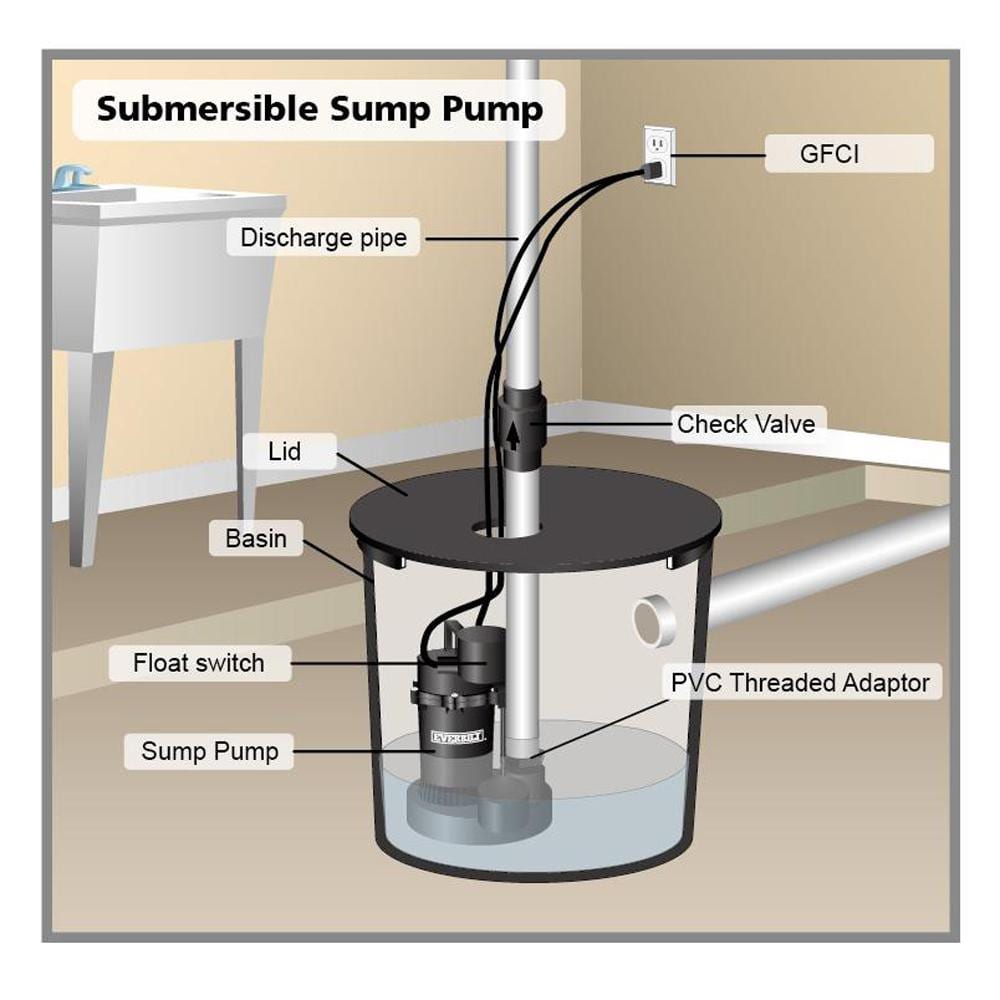Posted by Dave Daigle on 27th May 2023
SUMP PUMP TROUBELSHOOTING AND DIAGNOSIS
Here are a few troubleshooting checks:
- Check to see if the sump pump is clogged.To prevent sump pump clogging, never let your submersible pump sit directly on the bottom of the sump pit. Instead, place it on top of a sump pump pedestal that elevates it above the area where the debris builds up. Small objects and debris can also get into the pit if it is uncovered. Uncovered pits also pose a hazard to children and pets. Keeping your sump pump in a container with a tight, sealed lid, will keep objects and debris from falling into the pit, while also keeping your kids and pets safe.
- Check to see if the sump pump switch is malfunctioning. A sump pump on/off cycles are controlled by this switch. When the water level in the pit rises to a certain level, this device causes the pump to turn on. Sometimes the switch can get stuck or jammed. In cheap plastic models the switch gets tangled in the system. In some cases the vibration of the working pump, displaces the float, causing it to lean against the wall of the pit and malfunction. When any of these things happen, the sump will either run non-stop, or stop working altogether. Installing an Ion Digital Level Controller eliminates most of these problems.
- Check the discharge line. Discharge lines often get clogged with debris at the exit point. Water can freeze in the discharge line during winter, causing the water to come back into the pit. Install grates at the end of the discharge pipe to keep debris and small animals from getting into the line. To keep the water flowing even when the discharge pipe is frozen down the line, install a special grated discharge line attachment like the one in the picture at the point where the pipe exits the basement.
- Examine the check valve Where the sump pump's discharge pipe exits the basement, there should be a check valve that prevents the discharged water from back-flowing into the basement once it has passed through the valve. If the check valve is broken, the water will come back and the pump will run non stop, wasting plenty of electricity before it eventually burns out. Make sure to examine the check valve to prevent backflow. If necessary, replace the check valve to maintain backflow protection.
- Make sure the sump pump has power Ironically, the same storms that bring the kind of precipitation that can cause a basement flood also have the potential to cause power outages, which will render the typical, electric-powered sump pump useless. In addition, there are accidental flips of the circuit breaker and times when the sump pump may be simply unplugged and forgotten. In any case, your sump pump may not be working when you need it most. Simple measures like installing a water alarm can let you know if the sump pump is not working. But what happens if you are away from home? Ideally, every home with a basement should have at least one battery-operated backup sump pump, which will kick in if the main pump stops working for any reason.
- Make sure the sump pit is big enough A sump pit that is too small for the amount of water that is being collected will cause the pump to run more often that it should and cause it to burn out eventually. Make sure the sump pit is big enough to handle the amount of water year round.
- Make sure the pump has the capacity and durability to handle the job Sometimes the sump pump is just not good enough. The best sump pumps have cast-iron housings that encase powerful motors. Less-expensive models with plastic housings tend to overheat easily, break often, or not have enough capacity to handle the amount of water pouring into the pit. In some rare cases, even a good cast-iron pump might not be enough to handle the water. Things like an underground spring or proximity to a lake or river can cause an enormous amount of water to enter the basement. This can be dealt with by installing one or more additional pumps in different corners of the basement.
- Make sure foundation drains are in good working condition The sump pump alone can't protect your basement. It relies on a foundation drainage system that is supposed to collect ground water and divert it to the sump pit. To drain ground water, the typical modern house is built with a french drain: a perforated pipe, buried by the foundation footing. The problem with french drains is that, because they are buried deep underground, they often get clogged with mud or collapse. To service or replace them, you would need to dig out the foundation, which can be a very messy, disruptive and expensive job, especially if you have decks, porches or similar fixtures attached to the house. There are also many instances in which french drains are not correctly installed, don't have the right pitch to get the water to the pit or are and not tied to the sump pump at all. Very old houses often have no foundation drainage whatsoever. If you have working sump pumps but you have leaks in other areas of the basement, your drainage system is most likely failing. The best alternative to fix it is to have an interior drainage system installed along the internal perimeter of the basement walls. These work like conventional french drains, but because they are installed internally, they can be periodically serviced. Good interior drainage systems can be fitted with service ports that allow the system to be flushed clear of debris and silt.


